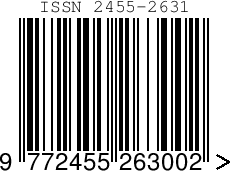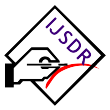Imp Links for Author
Imp Links for Reviewer
Research Area
Subscribe IJSDR
Visitor Counter
Copyright Infringement Claims
Indexing Partner
|
Published Paper Details
|
|
| Paper Title: | IMPACT OF BARRIERS TO MEDICATION ADHERENCE IN CHILDREN WITH EPILEPSY WITH AN EMPHASIS OF SEVERITY ASSESSMENT |
| Authors Name: | DR.M.Razia Khatoon , B.Priyanka , B.Preethi , L.Deepthi , S.Mubeena |
| Unique Id: | IJSDR2305221 |
| Published In: | Volume 8 Issue 5, May-2023 |
| Abstract: | ABSTRACT Background: Epilepsy is one of the common occurring diseases, the annual incidence rate of epilepsy in children aged 1–14 years was 70.4/100,000 children. Adherence to antiepileptic drugs is crucial in achieving seizure control, hence it is essential to rule out the barriers causing nonadherence; there is lack of information on adherence to antiepileptic drugs and the barriers that affect this among children. Aim: To measure impact of barriers to medication adherence in children with epilepsy with an emphasis of severity assessment. Methodology:The present study is a prospective cross-sectional study carried out for 6months of period (Nov 2021- May 2022) in 124 paediatric inpatients. Patients included in this study were children with age1-12years of both genders,children withhistory of seizures and are under the therapy with at least oneantiepileptic drugin the last 1year.Data was collected from the structured data collection proforma,severity was assessed by using GASE scale and medication adherence and barriers were measured by PEMSQ scale. Results:The incidence of Epilepsy in paediatric was found to be (46.69%) among this 124 paediatric satisfy the inclusion criteria. Among 124 paediatrics males (52.42%) were more compared to females (47.58%) and mostly in the age of 2-4 years (45.16%) the sociodemographic of patient caretaker was high inprimary education (46.77%), from rural region (48.38%) with income of lower middle class(89.5%). GTCS type of seizures is mostly common (74.19%) and the commonly prescribed antiepileptic drug was sodium valproate.Severity was assessed and reveals that somewhat severe cases were more(50.80%). There was a significant difference shown between sociodemographic parameters and PEMSQ scale measured. Conclusion: There was no significant difference in the assessment of Global assessment severity scale and PEMSQ score.There was proper adherence to antiepileptic medication in the study except for “I have transportation available to bring my child for follow up” children caregivers disagree the statement, for which the most commonly endorsed barrier was It is difficult to get from the pharmacy”. Hence there was insignificant impact on adherence to antiepileptic medication. |
| Keywords: | Epilepsy, Medication adherence, Barriers, Antiepileptic drug |
| Cite Article: | "IMPACT OF BARRIERS TO MEDICATION ADHERENCE IN CHILDREN WITH EPILEPSY WITH AN EMPHASIS OF SEVERITY ASSESSMENT", International Journal of Science & Engineering Development Research (www.ijsdr.org), ISSN:2455-2631, Vol.8, Issue 5, page no.1393 - 1406, May-2023, Available :http://www.ijsdr.org/papers/IJSDR2305221.pdf |
| Downloads: | 000337348 |
| Publication Details: | Published Paper ID: IJSDR2305221 Registration ID:206191 Published In: Volume 8 Issue 5, May-2023 DOI (Digital Object Identifier): Page No: 1393 - 1406 Publisher: IJSDR | www.ijsdr.org ISSN Number: 2455-2631 |
|
Click Here to Download This Article |
|
| Article Preview | |
|
|
|
Major Indexing from www.ijsdr.org
| Google Scholar | ResearcherID Thomson Reuters | Mendeley : reference manager | Academia.edu |
| arXiv.org : cornell university library | Research Gate | CiteSeerX | DOAJ : Directory of Open Access Journals |
| DRJI | Index Copernicus International | Scribd | DocStoc |
Track Paper
Important Links
Conference Proposal
ISSN
 |
 |
DOI (A digital object identifier)
  Providing A digital object identifier by DOI How to GET DOI and Hard Copy Related |
Open Access License Policy
Social Media
Indexing Partner |
|||
| Copyright © 2024 - All Rights Reserved - IJSDR | |||






Facebook Twitter Instagram LinkedIn